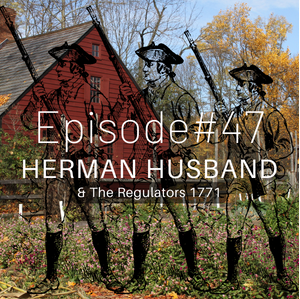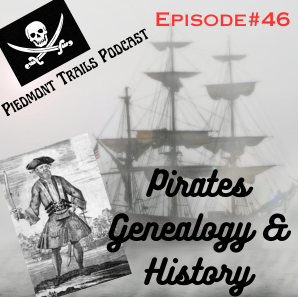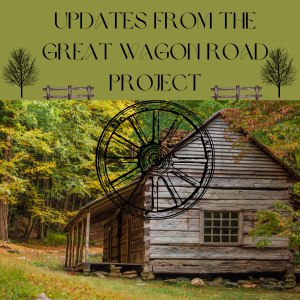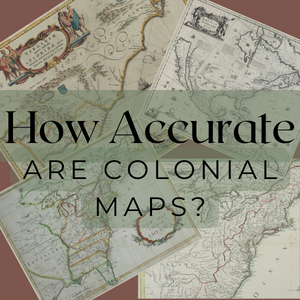The previous article left the Great Wagon Road on the banks of the Yadkin River in North Carolina. The road ended at the Shallow Ford Crossing in the year of 1748 before additions were added later. Carolina was a vast wilderness west of the Yadkin River and early settlements were discouraged prior to circa 1730. Edward Hughes operated a tavern in this location for over 50 years. The tavern was in place by 1753. The actual crossing is located near Cornwallis Drive and was comprised of natural stone that was flat across the river and shallow. Although during frequent rains and storms, the area was prone to flooding and would prevent wagons from crossing for days at a time. Early settlers living in this area in 1748 were Morgan Bryan, Squire Boone, James Carter, George Forbush, Samuel Davis and William Linville. It is believed that these settlers all traveled together down the Great Wagon Road from Virginia with the exception of Edward Hughes. According to documents, Edward settled in the area prior to 1748 and traveled from Philadelphia, Pennsylvania. While traveling, Edward purchased a tract of land in the valley of Virginia during December of 1746 but left the area during the fall of 1747.
From the Shallow Ford crossing, the Great Wagon road ended in 1748 and a small pack horse trail continued from this point to Salisbury, NC. Present day route would be portions of Highway 158, Highway 601 and NC Highway 801. Once on Old Mocksville Road, the original route follows for 8 1/2 miles to Salisbury. This portion of the road was ordered for improvements in 1763 and was completed as a wagon road approx. 1764. Also, from the Shallow Ford crossing, another road was ordered in 1770 that would travel to Mulberry Fields, presently known as Wilkesboro. This road would follow present day Highway 421. It was known to the early settlers as Boone Road, named after Daniel Boone. The road connected to the Wilderness Road and eventually reached Kentucky.

The road ended at Salisbury for a time until 1755 when the road was extended to the Mecklenburg County and the settlement of Charlotte, NC. The present day route follows US Highway 29. Charlotte was originally known as Charlotteburg and was first settled circa 1750. By 1768, the settlement was chartered as a town, largely by Scotch-Irish traders. In most cases, the presence of an inn indicated the location of the county seat. Salisbury and Charlotte both contained inns which allowed the county justices a residence on court days.
The actual route for the Great Wagon Road south of Charlotte has not been fully researched as it has north from Charlotte. Correspondence from historical societies, South Carolina State Archives and libraries support the following route. Traveling south along US Highway 29 to Lancaster County, South Carolina. This boundary was formerly known as the Catawba Indian Nation. This tribe survived the early settlers of the 18th century and survived the American Revolutionary War while fighting with the patriots against Cornwallis. They are a recognized tribe today and many are still living on portions of the original lands.
The road was known to the early settlers as Camden Road or Wagon Road. An historical road marker can be located at Twelvemile Creek which is now a bridge on Harrisburg Road and US Highway 521. Traveling along for 13 miles, you will cross three creeks which are now culverts. The names of these are Fording Causer Branch, Cane Creek and Camp Creek. The road then crosses Gills Creek and enters into present day Lancaster. Lancaster originated as a small settlement as early as 1759. The Waxhaw Presbyterian Church was located in the area during this time period. Lancaster was formed in 1795. Following US Highway 521 for approx. 20 miles, Bear Creek will be visible as well as Kershaw, an early settlement established in 1732. Us Highway 521 continues for approx. 25 miles until the settlement of Camden is reached. Both Camden and Kershaw are treasure troves for early history of South Carolina. Like Kershaw, Camden was established during the year of 1732.

Camden is located along the Wateree River and was a powerful waterway for the early pioneers. The town was originally named Fredericksburg and Kershaw was known as Pine Tree Hill. From this point, the road takes US Highway 1 and Taylor Street for 30 miles until the Congaree River is reached and the city of Columbia. Continuing on US Highway 1 and Augusta Road, the next 12 miles covers the intersection of present day Interstate 26 and US Highway 1. Lexington is reached on the road after an additional 12 miles. Lexington was formally known as Saxe-Gotha and established in 1735.

Leaving Lexington, the road follows South Carolina Highway 23 for 21 miles to the Edgefield County line. Francis Higgins operated a ferry on the Saluda River and was well-known to many travelers along the road. At this point, the road follows South Carolina Highway 121 for approximate 30 miles until the Savannah River. The travelers would navigate the river to reach Augusta, Georgia.
The next segment of this series will concentrate on another route entering into South Carolina and arriving in Augusta, Georgia. I hope you are enjoying this journey with Piedmont Trails and hoping you are finding new hints and clues for your ancestor’s trails.
Categories: Georgia, North Carolina, South Carolina











Impressive, very impressive research and presentation of same. A good first entry for the new year. Thanks!
LikeLiked by 1 person
Thank You So Much for the kind words. I greatly appreciate them.
LikeLike
Thank you for this work. I find it very informative.
LikeLiked by 1 person
Thanks for this interesting journey. Boone’s, Bryan’s and Linville’s are all in my family tree, along with many other interesting relatives. Edward “Neddie” Boone is my 7th gr-grandfather.
LikeLiked by 1 person
I have EKA named Edward Hughes in Charles City and Henrico counties, on Tuckahoe Creek, Harding’s Branch, late 1600s early 1700s. Can you tell me anything more about Edward Hughes mentioned here. Thank you.
LikeLiked by 1 person
Allow me to look through my research notes and I will get back to you.
LikeLike
Can you share with me what particular information are you looking for?
LikeLike
I’d love to see this kind of story about Adam “The Pioneer” Sherrill (first European to settle west of the Catawba River) and the trailblazers westward into Tennessee.
LikeLiked by 2 people
Very nice reading and interesting. I don’t have a clue where or when my ancestors came from. I’ve tried to find out but it gets complicated. Thank you
LikeLiked by 1 person
I wish you great success on your quest to find the trails of your ancestors. Thank You so much for your kind words !!
LikeLike
What about those (Scots-Irish) coming from Pennsylvania, Virginia who ended up in eastern TN, down into NE AL? Route they may have taken?
LikeLiked by 1 person
Hi Dana and Thank You for your question. In order to determine the route taken from Pennsylvania through Virginia to Tennessee and later northeastern area of Alabama, do you have timeline date range?
LikeLike